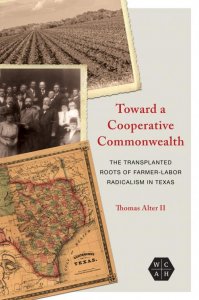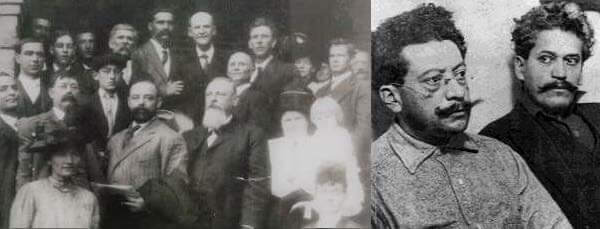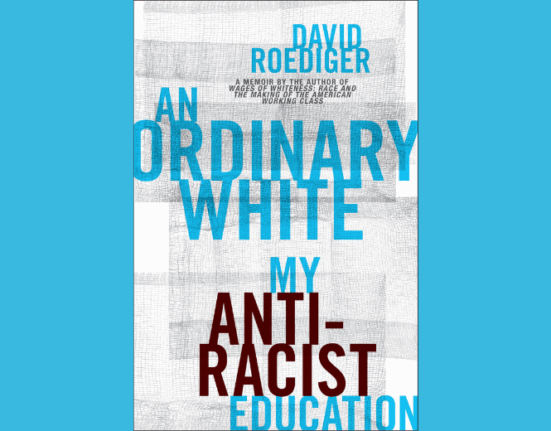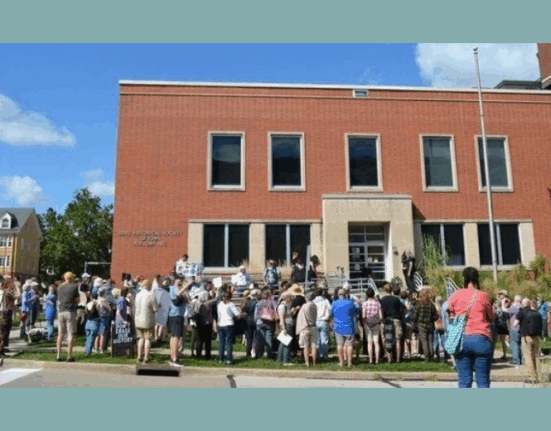This is the fourth and final contribution to our symposium on Tom Alter’s new book, Toward a Cooperative Commonwealth: The Transplanted Roots of Farmer-Labor Radicalism in Texas, published recently by University of Illinois Press. We started with Kyle Wilkison’s analysis of the book’s contribution and survey of previous literature. Theresa Case weighed in with a tour of the book and some questions. Chad Pearson suggested that Alter’s book countered or helped to re-frame old arguments. Now we welcome a response by Tom Alter. Thanks to Chad Pearson for organizing this symposium. These are peer-reviewed.

I am very appreciative of Theresa Case, Chad Pearson, and Kyle Wilkison for their time and thoughtfulness in reviewing my book. Each of them identified what I intended to be the central themes of the book in demonstrating the role independent working-class political action played in bringing about reforms and how issues of race and even more so repression, stymied further progress. Case, Pearson, and Wilkison each bring their respective knowledge of working class protest organizations in Texas, capitalist repression, and working-class cultural and religious practices to bear in their assessments of Toward A Cooperative Commonwealth. Their insights are valuable in understanding the book’s place within the historiography of southern working-class radicalism. I thank the editors of LaborOnline for giving me the opportunity to briefly comment on their reviews.
Pearson accurately draws out something that I was not conscious of doing while writing the book. This is seeing a capitalist as a capitalist whether they are a Rockefeller in New York or in a small town. As Pearson points out, some historians have tried to differentiate between bad Robber Barons like Rockefeller and the good local merchant capitalist. I guess I immersed so much in the world of these agrarian socialists and let their words and actions speak that I did not separate the Robber Barons from the local capitalists who were one and same to people like the Meitzens. Often the local landlord and merchant was more repressive to Texas tenant farmers than the distant Wall Street corporation.
While there was not much division between local and national capitalists in their conjoined repression of working-class radicalism, Case raises a question over divisions within working class Texans. She asks, “You do not talk much about the urban/rural divide because race was the main divider. Is there anything that did not make it into the book, or that I’m overlooking that gives us some insights into the relationship between industrial workers and landless farmers in Texas? In other words, what big humps did farmers and workers get over to work with each other?” Race was the main divide.

With this book I let the research guide me. Yes, I was rooting for these agrarian radical subjects to be pure working-class heroes. However, they were not perfect–especially on race. I did not find anything showing working farmers disdain for industrial workers. They were inspired by the Knights of Labor (KOL) railroad strikes in 1885 and 1886, which I feel really got the Populist movement going. Some Farmers Alliance members were also members of KOL, not just like E.O. Meitzen who was a newspaper man, but working farmers who also worked on the railroad to keep their farms afloat. Texas Populists also worked very closely with Chicago socialists and wanted Eugene Debs, then president of the American Railway Union, to be the People’s Party candidate for president in 1896. I have the example in the book of the 1920 special election to replace the Houston area state senator, where E.R. Meitzen representing the Nonpartisan League forms a coalition with Houston Labor Council to support their own slate of candidates. In response to farmers joining an electoral coalition with urban workers, one Houston trade unionists remarked “the hayseeds have shown us the way” by showing them the path of independent working-class political action.
Returning to issues of race, Case asks “You suggest that, at one point, had white radicals made stronger common cause with black and brown radicals, they might have won electorally, but would the Democrats have allowed them to take power? The federal government probably would not have intervened. Where do you think such a victory likely would have led?” I do think that working class parties might have won more in the electoral arena if white radicals had made more common cause with black and brown working-class people. C. F. Richardson, editor of the black newspaper the Houston Informer, notes how in the 1922 state elections Democrats and Republicans were ignoring the black vote and it was there waiting to be addressed and organized. Unfortunately, Klan Democrats noticed this too and passed the 1923 White Primary Act to disenfranchise black voters.

So you do have the Democrats working to stop black and white workers from coming together electorally. And Case has a point: even if a black-white-brown electoral alliance formed around a radical working-class campaign and won I do think the Democrats and federal government would have intervened to repress it. The Democratic Party and state governments already did this during the Populist Revolt of the 1890s. The most notorious example was when the federal government did nothing when black and white Populists called for federal intervention during Wilmington (North Carolina) coup of 1898. During the coup, white supremacists killed 300 people by some estimates, torched black businesses and forced around 2,000 African-Americans to flee town. Also, when the people of Milwaukee elected the Socialist Victor Berger as their US Representative in 1918, Congress refused to let him take his seat. The same thing happened in New York in 1920 when five Socialists elected to the state legislature were expelled from their seats.
As to where I think such a victory likely would have led? Well, we would probably now have national health care, free college education, and the US would not be in NATO expanding it to the front door of Russia and causing an international confrontation that could lead to World War III.
Case, Pearson, and Wilkison also point out the differences of interpretation of Texas agrarian radicalism between myself and other historians. In particular, Case signals out “Neil Foley’s damning portrait” of Tom Hickey, a leader of the Texas Socialist Party and longtime collaborator of the Meitzens. With just a quick surface level examination of Hickey, he could be written off as a “crude” racist. While acknowledging Hickey’s racism, I decided to take a more nuanced look at Hickey by using the vast collection of primary source documents in the Hickey collection contained in the Texas Tech University archives. Foley did not use this collection, though it was available years before the publication of his critically praised White Scourge. Again, I let the available sources guide my analysis of Hickey instead of academic notions of “whiteness.”

If we are to combat and end racism, we must understand it on different levels. Countering the racism of white agrarian socialists like Hickey requires a different tool than the blunt object one uses in fighting the violent white supremacy of the Klan. While Hickey and the Meitzens do not provide useful models to build anti-racists movements, they do yield examples of how racial attitudes can evolve and change, especially when white people open themselves to inter-racial activism. This is what Hickey and the Meitzens did by working with Mexican revolutionaries. I appreciate Wilkison placing my work alongside Green and Buckingham’s on this issue.
Contrasts among myself and historian Gregg Cantrell are also brought-up by Case and Pearson over our treatments of capitalism and the New Deal. While Cantrell claims that Texas Populists advocated “social responsible capitalism” and were “the roots of American liberalism” which came to fruition in the New Deal and Lyndon Johnson’s Great Society, I interpret Populism differently. Populists of the 1880s-1890s fought for demands that challenged capitalism by redistributing wealth to producers and putting more governmental power in the hands of workers and farmers. They specifically broke from the liberalism of Texas Governor James Hogg and the Democratic Party.
Liberalism has not challenged corporate power, rather it has been its most effective defender. Once farmer-labor radicals, such as E.R. Meitzen, made peace with the Democratic Party and decided to work within it, we witness the marginalization of radical working-class economic demands and the contesting of power between labor and capital in the form of mass protest movements coming to an end by the 1950s.
Case asks, “what was possible had these radicals continued to organize independent of the two main parties?” To take a slogan from today’s activists for social, economic, and environmental justice, “Another world is possible!” We are currently living in a world lacking independent working-class political action in a meaningful way. Ours is a world of increasing wealth inequality, climate change, incipient fascism, high infant mortality, and crippling student debt. All exacerbated by racism, sexism, homophobia, and transphobia.
I do take hope in the growing levels of class-consciousness within the working class, which can lead to renewed independent working-class political action. As I conclude in my book, “a return of the farmer-labor bloc of the Meitzen type may be well our only hope of transforming our political culture into one that fulfills the promise of genuine democracy.” (218)







